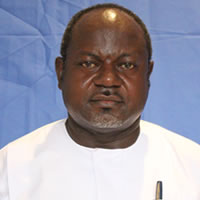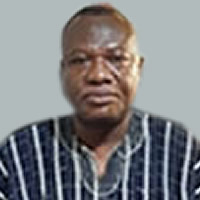Health and Nutrition
The health of the people cannot be overlooked since a healthy population is essential fordevelopment. The contribution of the people as far as development is concerned is very important, hence interventions must be introduced where the health needs of the people are lacking. During the survey, it was realised that the contribution to good health needs of the people is constrained by problems such as inadequate health facilities and the prevalence of diseases. Table 2.13 shows the location of the few health facilities in the district.
TABLE 2.13: HEALTH FACILITIES AVAILABLE
| ||
Facility | No. | Location |
Health Centre | 2 | Bosuso |
MCH/FP Centre | 1 | Begoro |
Private Maternity Home | 1 | Bosuso |
Mission Clinic | 1 | Begoro |
Private Clinic | 2 | Begoro |
Other problems that were identified from the survey were poor accessibility to health facilities. About 27.4% of the people complained about high transport cost to the nearest health centre. About 11.9% of the people have problems in acquiring drugs because of its cost. As much as 54.2% also complained about high charges at the hospitals.
Diseases that are prevalent in the district are shown on table 2.14 in order of frequency of occurrence as reported in 1996 by the District’s Health Management Team (DHMT). Table 2.15 also shows diseases in order of frequency of occurrence as was gathered during field survey in 1997.
TABLE 2.14: MAJOR DISEASES (DHMT)
| |
Diseases | Percentage |
Malaria | 58.9 |
All Other Diseases | 11.18 |
Skin Diseases | 8.30 |
VRTI | 5.93 |
Gastroentevitis | 4.28 |
Acute Eye | 2.36 |
Intestinal | 2.29 |
Measles | 2.9 |
Anaemia | 1.7 |
Rheumatism | 0.67 |
TABLE 2.15: MAJOR DISEASES (SURVEY)
| |
Diseases | Percentage |
Malaria |
33
|
Stomachache
| 16.3 |
Rheumatism
| 10.9 |
Others
| 8.1 |
Piles
| 7.9 |
Boil
|
6.3
|
Eye
| 6.3 |
Bilharzia
|
6.3
|
Guinea Worm |
2.2
|
Hernia |
1.8 |
The difference in the two tables is due to the fact that, the DHMT report was based on diseases that were reported to the health centres and clinics whiles the survey recorded those who do not report to health centres in addition. This shows the reluctancy of the people to attend to health centres due to accessibility problems earlier enumerated. The health survey in the district revealed among other things the following:
- Malaria is the predominant disease (33%)
- 32% of the children between 0-5 years are malnourished
- Traditional Birth Attendants (TBAs) delivery is 46% of all deliveries
- Only 8.6% of all new births weighed, had a standard weight of 2.5kg
- Doctor-Patient ratio is 1:103,711 as compared with the national figure of 1:12000
- Nurse-Patient ratio is 1:4120
Table 2.16 below shows the types or kinds of health staff available and their number in the district.
TABLE 2.16: HEALTH PERSONNEL
Health Personnel
Percentage
Doctor
1
Nurses
25
Ward Assistants
1
Orderlies
Scavengers
6
MCH/FP
25
Nutrition
1
Disease Control
2
Leprosy
2
General Nurses
8
In response to waste disposal measures about 25.3% of the people use unorganized refuse dumps and this has the capability of breeding mosquitoes and other diseases
Date Created : 11/24/2017 5:43:11 AM





